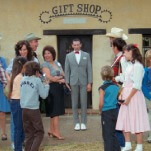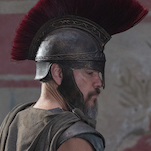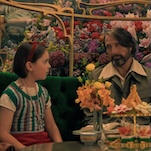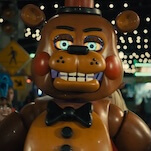R.I.P. Miklós Jancsó, award-winning Hungarian director

Director Miklós Jancsó, one of the defining figures of Eastern European film, has died at the age of 92. A master of complicated long takes and poetic symbolism, Jancsó had a tremendous impact on world cinema, producing a string of consecutive, politically charged black-and-white period films—My Way Home (1965), The Round-Up (1966), The Red And The White (1967), and Silence And Cry (1968)—which provided a visual and thematic template for generations of art-house filmmakers. At the peak of his popularity, Jancsó was a major box-office draw in his native Hungary (where 1 in 10 people saw The Round-Up in theaters) and enjoyed a reverent following abroad. (In 1972, a young Tony Scott named him as his favorite filmmaker.) Though international interest in his work faded during the mid-1970s, he remained deeply involved in the film culture of his native Hungary, and his influence can be felt in the work of later Magyar filmmakers like György Fehér, Benedek Fliegauf, and especially Béla Tarr.
Born into a Hungarian-Romanian family in 1921, Jancsó attended law school before enrolling in the Academy of Theatre and Film Arts in Budapest, where he studied under the pioneering film theorist Béla Balázs. After spending most of the 1950s directing documentary and propaganda shorts, Jancsó made his feature directorial debut with The Bells Have Gone to Rome (1958), a drama set during the German Occupation. However, it wasn’t until Cantata (1963) that Jancsó’s work started to attract attention. Influenced by Michelangelo Antonioni, it was the first of Jancsó’s films to utilize radically long takes marked by complex, choreographed camera movement. It was also Jancsó’s first feature collaboration with Gyula Hernádi, who would remain his regular screenwriter for decades.
Jancsó’s next four narrative features—of which The Round-Up and The Red And The White remain the most highly regarded—saw the director developing a personal symbolic language (fire; nude and uniformed figures; the vast Hungarian plain) to go with his “how did they do that?” long-take style. Sparkling Winds (1969), Jancsó’s first film in color, also introduced song and dance into his style, paving the way for his greatest work, the vibrant, pageant-like Red Psalm (1972), which won Jancsó his first and only Best Director award at Cannes. (Nominated five times over the course of his career, he would be given a lifetime achievement award at the 1979 festival.)








































